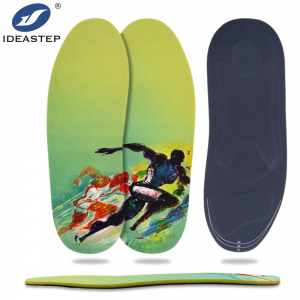
Running insoles, also known as running shoe inserts or orthotic insoles, offer several ways to protect the foot during running:
1. Shock absorption
Running puts a significant amount of impact and stress on the feet, particularly the heels and arches. Insoles with cushioning materials, such as foam or gel, help absorb and distribute the shock from each footstrike. This reduces the impact on the feet, minimizing the risk of injuries like stress fractures, plantar fasciitis, or shin splints.
2. Arch support
Many running insoles provide arch support to help maintain the natural alignment of the foot. Proper arch support helps distribute weight evenly across the foot, reducing strain on the arches and preventing excessive pronation (inward rolling) or supination (outward rolling). This support can help prevent conditions like flat feet, fallen arches, or overpronation-related injuries.
3. Stability and alignment
Running insoles often have features like heel cups or stabilizing structures to improve foot stability and alignment. These features help control excessive foot motion, such as overpronation or excessive rolling, which can lead to injuries. By promoting proper foot alignment, insoles can reduce the risk of ankle sprains, knee pain, and other overuse injuries.
4. Pressure distribution
Some running insoles have specialized pressure-relief zones or padding in specific areas of the foot. These zones help alleviate pressure points and redistribute weight more evenly across the foot. By reducing pressure on certain areas, such as the forefoot or heel, insoles can prevent discomfort, blisters, calluses, and other foot problems.
5. Customization
Custom orthotic insoles can be created to address specific foot conditions or imbalances. These insoles are designed based on an individual’s foot shape, gait analysis, and specific needs. Custom insoles provide personalized support and protection, helping to correct biomechanical issues, improve alignment, and reduce the risk of injuries.
It’s important to note that running insoles are not a one-size-fits-all solution. The choice of insoles depends on factors such as foot type, running style, and any existing foot conditions or injuries. It’s recommended to consult with a healthcare professional or a specialist in foot health to determine the most suitable running insoles for your specific needs.
If you are looking for running insoles, it may be you need: https://www.aideastep.com/product/flat-heat-moldable-insoles/.
